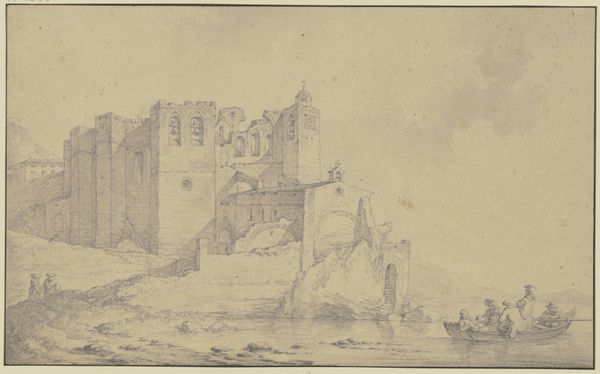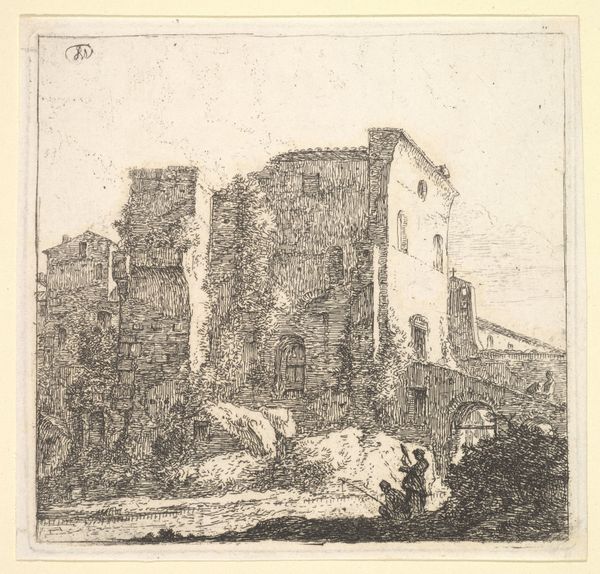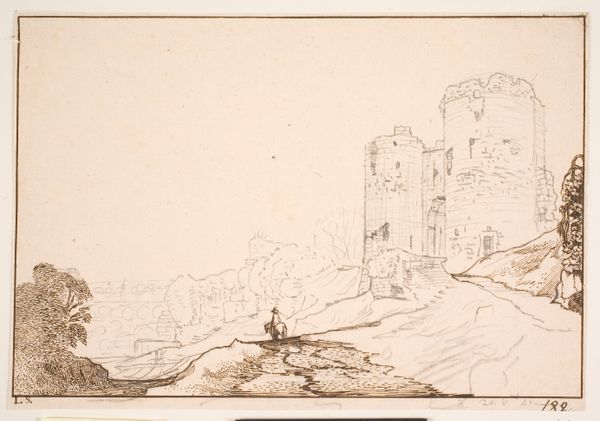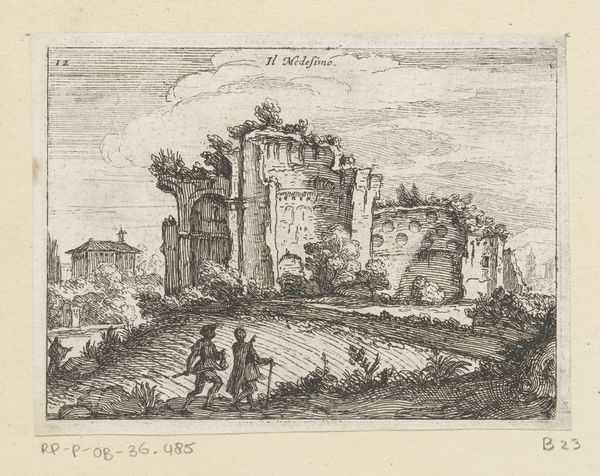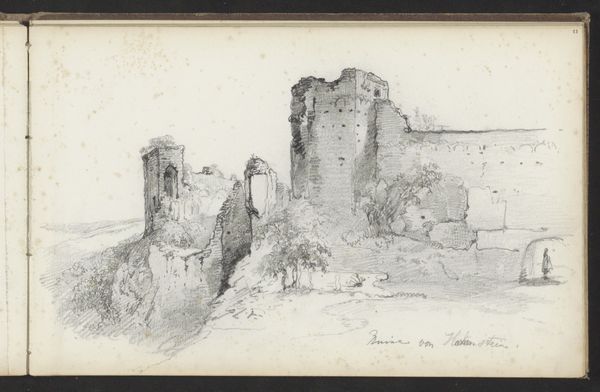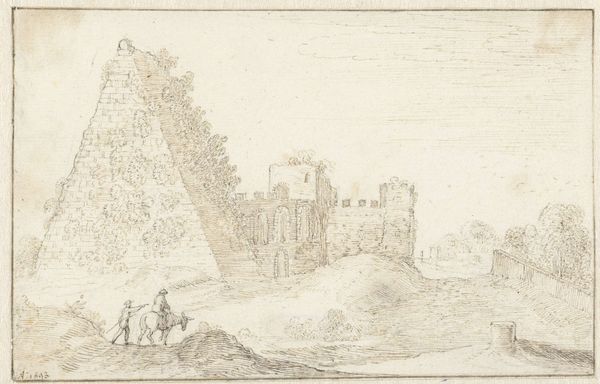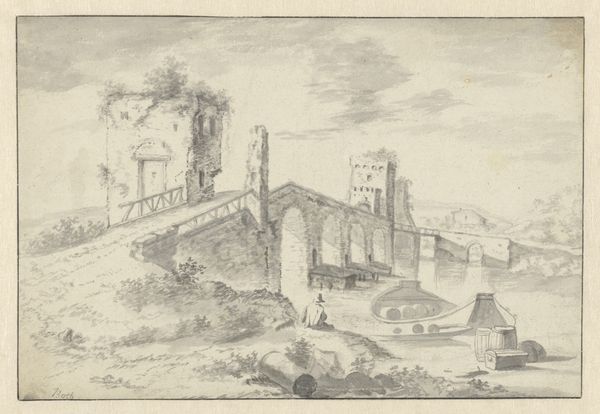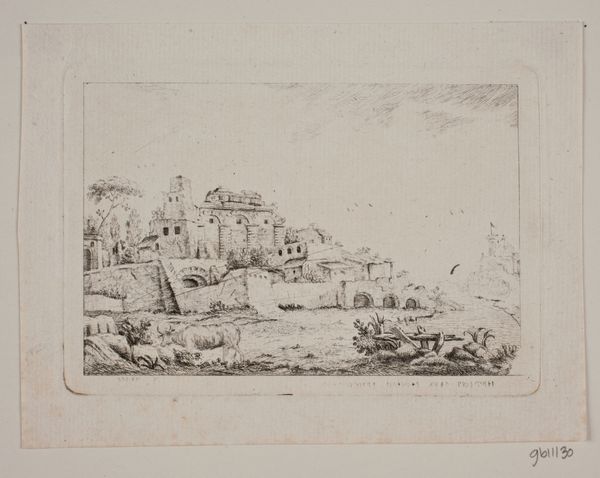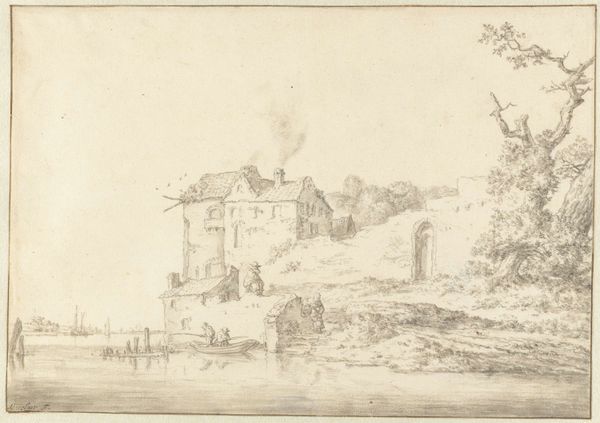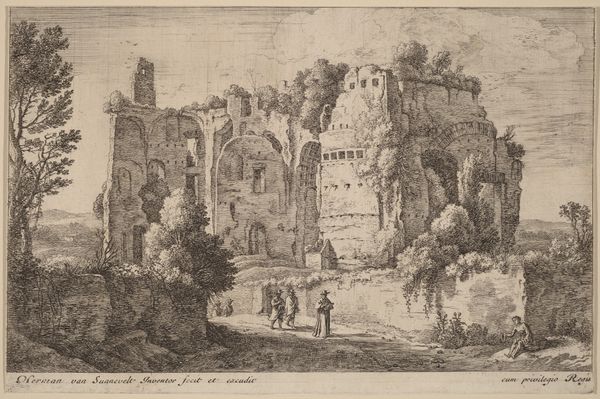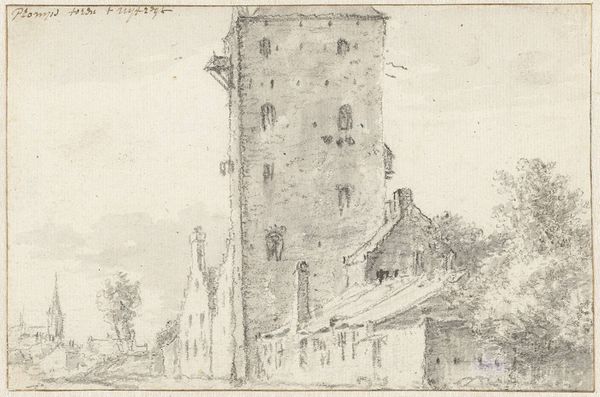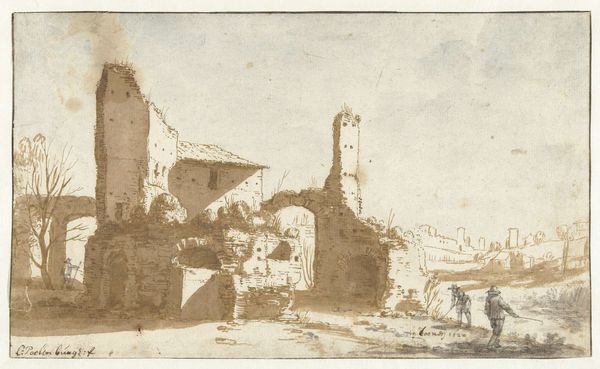
drawing, etching, pencil, architecture
#
drawing
#
etching
#
pencil sketch
#
landscape
#
etching
#
pencil
#
italian-renaissance
#
architecture
Dimensions: 421 mm (height) x 560 mm (width) (bladmaal)
Curator: There’s something so delicately melancholic about this, don’t you think? Like a whisper from history. Editor: It’s interesting how Jens Petersen Lund captured that feeling of faded grandeur in his 1764 piece, “Cestiuspyramiden ved Porta S. Paulo,” here at the SMK. A study in contrasts, wouldn’t you agree? Curator: Absolutely. That ancient pyramid juxtaposed with the crumbling medieval walls... It's this palpable tension, this almost ghostly quality brought forth so simply through pencil and etching that really draws you in. The line work is so fine, so tentative, almost as if he were afraid to fully commit to the image. Editor: The choice of subject matter speaks volumes. Rome as a palimpsest, where different historical strata collide. That Pyramid of Cestius, built during the Roman Empire, standing alongside what’s left of the Aurelian Walls—a structure reinforced over centuries, shows power, decay, and resilience—all interwoven in the same space. Curator: Which, as a subject, in and of itself has been seen many times. But, in my mind, what sets Lund’s work apart from the canon, is the almost ethereal way he renders the textures. That roughness, you can almost feel the stone worn smooth by centuries of weather and human touch. And even how the light, or lack of it, softens everything just so, the scene feels caught between sleep and wakefulness, much like the ruins he is drawing. Editor: Definitely. It’s important to recognize Rome wasn’t only the epicenter of antiquity but also a site deeply shaped by colonialism, class struggle, and the papacy, so Lund's documentation— however artistic—captures how power and authority transform and impact physical space over time. These remnants are also laden with symbolism related to memory, identity, and cultural hegemony. Curator: And looking closer you can observe those tiny figures clustered at the base, and that just magnifies the whole notion of time and place, doesn't it? How small we are compared to these monoliths of history. Editor: Precisely. And art, too, acts as an artifact of its own time. Considering Jens Petersen Lund working during a period heavily influenced by Neoclassicism, yet imbuing his work with this somber, almost Romantic sensitivity. It makes us reflect not only on what he saw, but on his world and societal perspective, don’t you think? Curator: Yeah, the past echoes so vibrantly through this understated work. Makes me ponder what remnants of *our* era will evoke in centuries to come... Editor: Perhaps equally complicated conversations about power and decay... Hopefully also of renewal. Thank you.
Comments
No comments
Be the first to comment and join the conversation on the ultimate creative platform.
